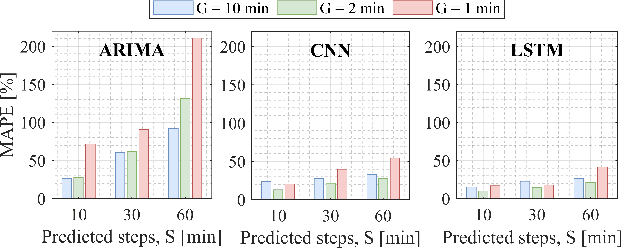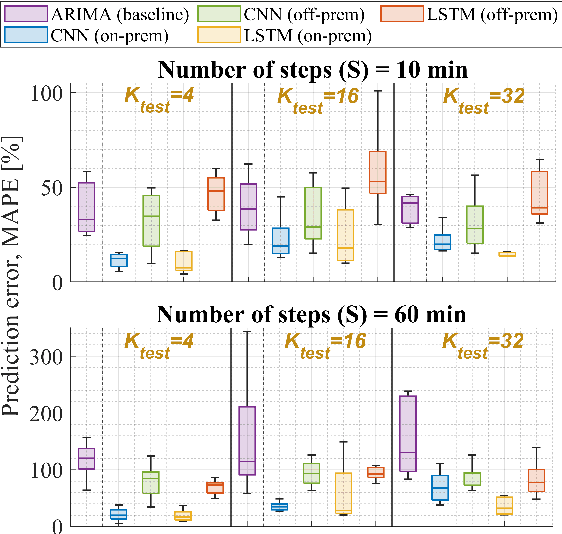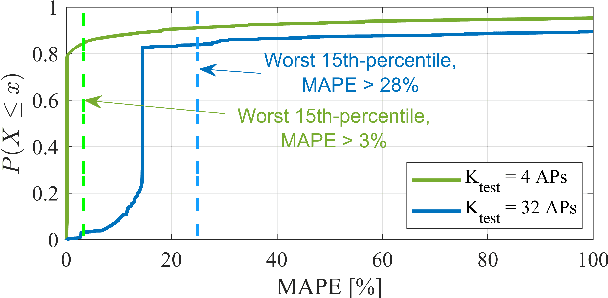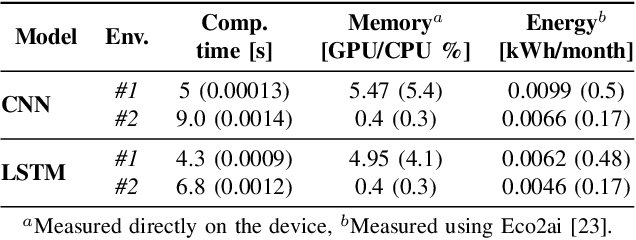Mika Kasslin
Distributed Learning for Wi-Fi AP Load Prediction
Apr 22, 2024



Abstract:The increasing cloudification and softwarization of networks foster the interplay among multiple independently managed deployments. An appealing reason for such an interplay lies in distributed Machine Learning (ML), which allows the creation of robust ML models by leveraging collective intelligence and computational power. In this paper, we study the application of the two cornerstones of distributed learning, namely Federated Learning (FL) and Knowledge Distillation (KD), on the Wi-Fi Access Point (AP) load prediction use case. The analysis conducted in this paper is done on a dataset that contains real measurements from a large Wi-Fi campus network, which we use to train the ML model under study based on different strategies. Performance evaluation includes relevant aspects for the suitability of distributed learning operation in real use cases, including the predictive performance, the associated communication overheads, or the energy consumption. In particular, we prove that distributed learning can improve the predictive accuracy centralized ML solutions by up to 93% while reducing the communication overheads and the energy cost by 80%.
AI/ML-based Load Prediction in IEEE 802.11 Enterprise Networks
Oct 11, 2023



Abstract:Enterprise Wi-Fi networks can greatly benefit from Artificial Intelligence and Machine Learning (AI/ML) thanks to their well-developed management and operation capabilities. At the same time, AI/ML-based traffic/load prediction is one of the most appealing data-driven solutions to improve the Wi-Fi experience, either through the enablement of autonomous operation or by boosting troubleshooting with forecasted network utilization. In this paper, we study the suitability and feasibility of adopting AI/ML-based load prediction in practical enterprise Wi-Fi networks. While leveraging AI/ML solutions can potentially contribute to optimizing Wi-Fi networks in terms of energy efficiency, performance, and reliability, their effective adoption is constrained to aspects like data availability and quality, computational capabilities, and energy consumption. Our results show that hardware-constrained AI/ML models can potentially predict network load with less than 20% average error and 3% 85th-percentile error, which constitutes a suitable input for proactively driving Wi-Fi network optimization.
 Add to Chrome
Add to Chrome Add to Firefox
Add to Firefox Add to Edge
Add to Edge